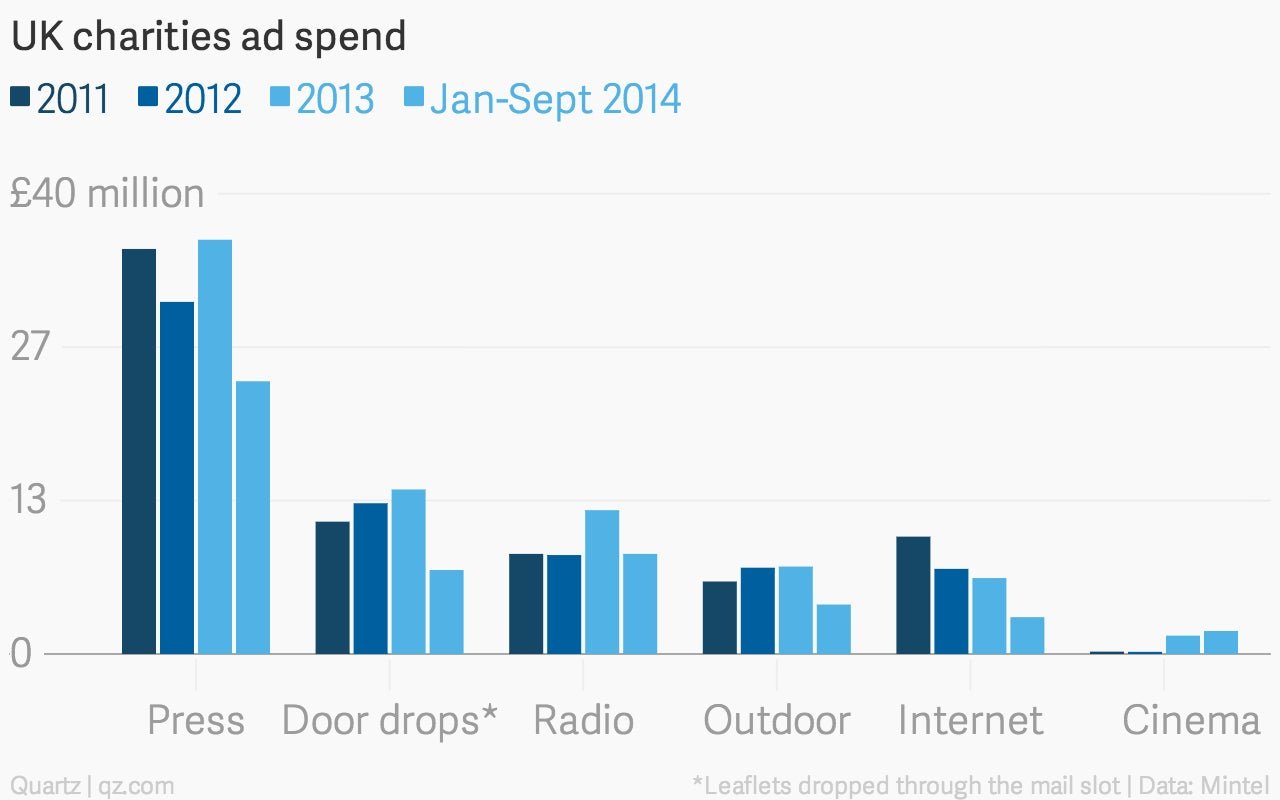Proof that those annoying pre-movie ads actually work
Take a seat in an American movie theater before the main feature and you’ll likely be treated to an ear-popping selection of trailers for upcoming attractions and several beer ads. Take a seat in a UK theater and you may see something different: An appeal for cash from a charity.


Take a seat in an American movie theater before the main feature and you’ll likely be treated to an ear-popping selection of trailers for upcoming attractions and several beer ads. Take a seat in a UK theater and you may see something different: An appeal for cash from a charity.
The amount spent on advertising on the big screen by UK charities has increased tenfold since 2011, according to new data collated by Nielsen Media Research and Mintel, a market intelligence agency. Ad buys have risen from a low base of £204,591 ($308,000) in 2011 to £2 million in the first nine months of 2014, 0.8% of the charitable sector’s total advertising spend to September last year. And more charities are going to the movies: 17 different charities advertised in cinemas in 2014, up from 13 in 2013.

The £2 million charities spent on in-cinema advertising is peanuts compared to the £138 million they spent on direct mail in the first nine months of 2014 (not shown in the chart). But movie advertising is trending upwards, while spending on direct mail is down from from £273.9 million in 2011. In fact, ad spending by charities is dropping across most media, including newspapers, radio, and billboards. Even the great new hope—online advertising—is out of favor. Charities now spend a third as much on internet advertising as they did in 2011. The only other medium in which charties are spending more is television.
“The reason we are seeing more of this type of advertising is testament to the power of cinema advertising,” explains Anna Cremin, head of research and consumer insight at Pearl & Dean, an advertising company focused on cinemas. “Cinema is also a social event which is consumed with others and talked about long after the event. If the viewer sees something impactful on the big screen then they will not only remember it, but will talk about it with others.”
The benefits of watching things on the big screen are clear, as anyone who’s ever shed a tear at the end of Toy Story 3 will attest to. The emotional punch of loud, surround sound systems draws the attention, and engages audiences more.
A study (pdf) conducted by Hall & Partners, a market research agency, found that 13% of participants could recall seeing a named ad at a movie theater, compared to 1.6% at home on TV. In an era where most people consume media on several screens simultaneously, and a load of online ads are blocked before they reach your browser and half go unseen, cinema offers a uniquely immersive experience.
“Even though the potential reach is much higher, it’s harder to estimate return on investment from online sources,” says Ina Miskavets, an analyst at Mintel. ”On the other hand, charities can count on the attention of the captive audience in cinemas.”
Of course, fewer people visit the movies than watch TV or have internet access. But if those that do see charities’ ads are more likely to support the cause, it makes the ad buys worth it.